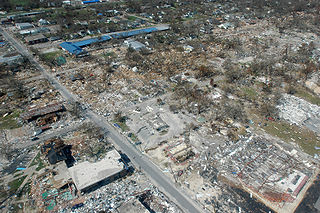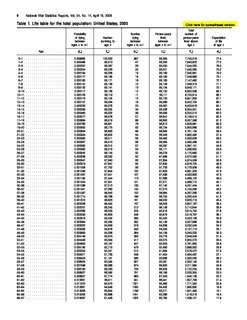
An actuary is a business professional who deals with the measurement and management of risk and uncertainty. The name of the corresponding field is actuarial science. These risks can affect both sides of the balance sheet and require asset management, liability management, and valuation skills. Actuaries provide assessments of financial security systems, with a focus on their complexity, their mathematics, and their mechanisms.

Actuarial science is the discipline that applies mathematical and statistical methods to assess risk in insurance, finance and other industries and professions. Actuaries are professionals trained in this discipline. In many countries, actuaries must demonstrate their competence by passing a series of rigorous professional examinations.

The Society of Actuaries (SOA) is a global professional organization for actuaries. It was founded in 1949 as the merger of two major actuarial organizations in the United States: the Actuarial Society of America and the American Institute of Actuaries. It is a full member organization of the International Actuarial Association.

The Casualty Actuarial Society (CAS) is a professional society of actuaries specializing in property and casualty insurance.
The Institute of Actuaries was one of the two professional bodies which represented actuaries in the United Kingdom. The Institute was based in England, while the other body, the Faculty of Actuaries, was based in Scotland. While the Institute and Faculty of Actuaries were separate institutions, they worked very closely together, and their professional qualifications and actuarial standards were identical. On 25 May 2010, voting members of the Institute who took part in a ballot voted to merge the Institute with the Faculty, thus creating the Institute and Faculty of Actuaries, which came into being on 1 August 2010. The Institute of Actuaries ceased to exist on that date.
Christopher Daykin CB was the Government Actuary and head of the United Kingdom Government Actuary’s Department (GAD) from 1989 to 2007 where he worked on social security, pension fund consultancy,national pension policy, population projections, risk management and pension reform. He is the second longest holder of the post.

The Canadian Institute of Actuaries (CIA) is the national organization of the actuarial profession in Canada. It was incorporated on March 18, 1965. The FCIA designation stands for Fellow of the Canadian Institute of Actuaries. As the national organization of the Canadian actuarial profession, the CIA means to serve the public through the provision by the profession of actuarial services and advice by: representing the Canadian actuarial profession in the formulation of public policy; promoting the advancement of actuarial science and sponsoring programs for the education and qualification of CIA members and prospective members; ensuring that actuarial services provided by its members meet accepted professional standards; and assisting actuaries in Canada in the discharge of their professional responsibilities.
William Paul Joseph McCrossan is an actuary and former Canadian Member of Parliament.
The Faculty of Actuaries in Scotland was the professional body representing actuaries in Scotland. The Faculty of Actuaries was one of two actuarial bodies in the UK, the other was the Institute of Actuaries, which was a separate body in England, Wales and Northern Ireland. While the Faculty of Actuaries and the Institute of Actuaries were separate institutions, they worked very closely together, and the professional qualifications and professional standards for actuaries were identical in each of them. On 25 May 2010, voting members of the Faculty who took part in a ballot voted to merge the Faculty with the Institute of Actuaries, thus creating the Institute and Faculty of Actuaries which came into being on 1 August 2010, superseding the Institute of Actuaries which ceased to exist on that date.

The Actuarial Society of South Africa (ASSA) is the governing body for the actuarial profession in South Africa.

The American Academy of Actuaries, also known as the Academy, is the body that represents and unites United States actuaries in all practice areas. Established in 1965, the Academy serves as the profession’s voice on public policy and professionalism issues.

William Morgan, FRS was a British physician, physicist and statistician, who is considered the father of modern actuarial science.

The Institute of Actuaries of India is the sole professional body of [actuary|actuaries] in India. It was formed in September 1944 by the conversion of the Actuarial Society of India into a body corporate by virtue of the Actuaries Act, 2006.
Bernard Benjamin was a noted British health statistician, actuary and demographer. He was author or co-author of at least six books and over 100 papers in learned journals.

The Institute and Faculty of Actuaries is the professional body which represents and regulates actuaries in the United Kingdom.
The actuarial credentialing and exam process usually requires passing a rigorous series of professional examinations, most often taking several years in total, before one can become recognized as a credentialed actuary. In some countries, such as Denmark, most study takes place in a university setting. In others, such as the U.S., most study takes place during employment through a series of examinations. In the UK, and countries based on its process, there is a hybrid university-exam structure.
Erling Sverdrup was a Norwegian statistician and actuarial mathematician. He played an instrumental role in building up and modernising the fields of mathematical statistics and actuarial science in Norway, primarily at the Department of Mathematics at the University of Oslo but also via his links to Statistics Norway.
Sir George Francis Hardy KCB was a British actuary, Egyptologist and amateur astronomer. He became a Fellow of the Royal Astronomical Society in 1877 and was President of the Institute of Actuaries from 1908 to 1910.
The Morris Review was a government-sponsored review of the UK actuarial profession led by Sir Derek Morris in 2004–05. It was commissioned in March 2004, in the aftermath of the near collapse of Equitable Life, and the subsequent findings of Lord Penrose's Equitable Life Inquiry The review found a number of problems with the actuarial profession, including insularity of approach, lack of transparency, failure to take account of developments in financial economics, and the influence of 'entrenched commercial interests'.
Dr Barclay Barrowman JP, DTM, FCO, FRSH was born on 10 March 1896 in 100 Elderelic Street, Kelvin, Glasgow, Lanarkshire, Scotland the son of a Lime Merchant John Barrowman (1844-1900) and Helen Agnew (1854-?) he is the youngest of 9 children: Isabella (1874-?), Mary (1875-?), James (1878-?), Christina (1882-?), John (1887-?), Helen (1891-?), Margaret (1895-?) including his sister Janet Barrowman (1879-?) a suffragette who was arrested at Bow Street in 1912 and sentenced to two months hard labour in Holloway Prison.












